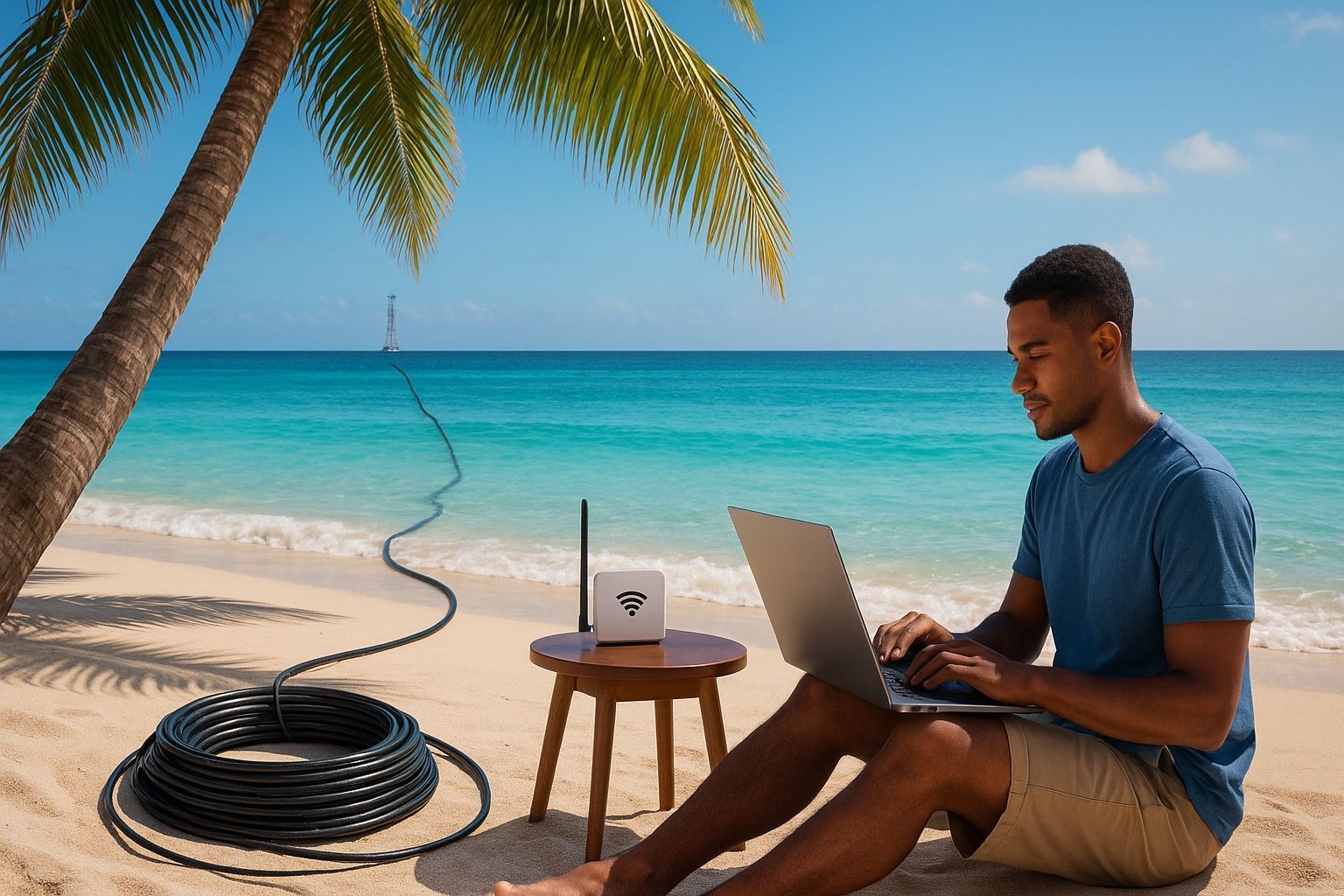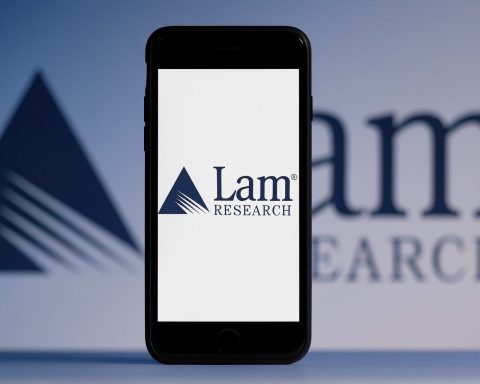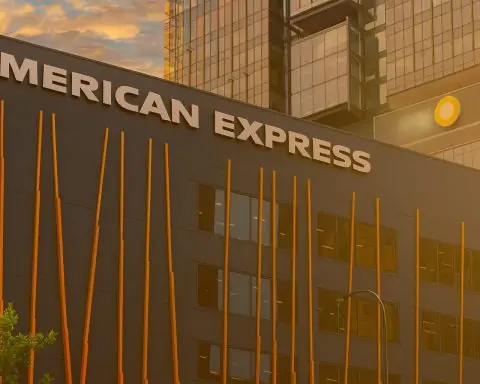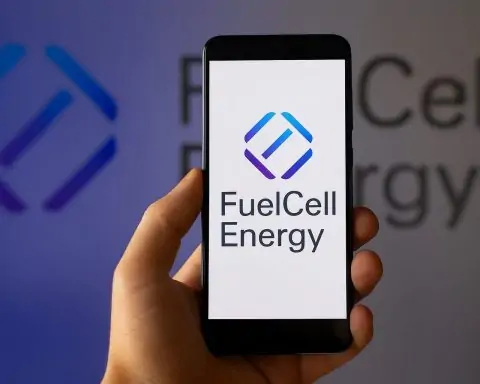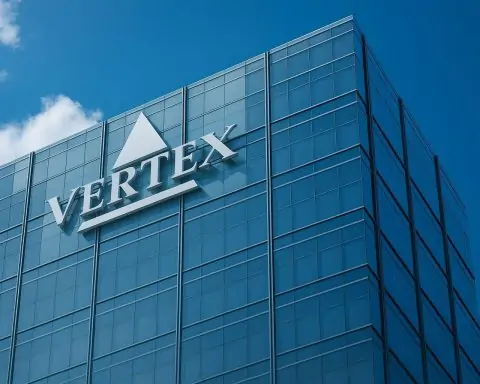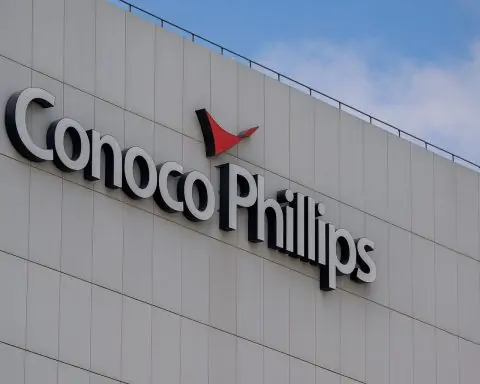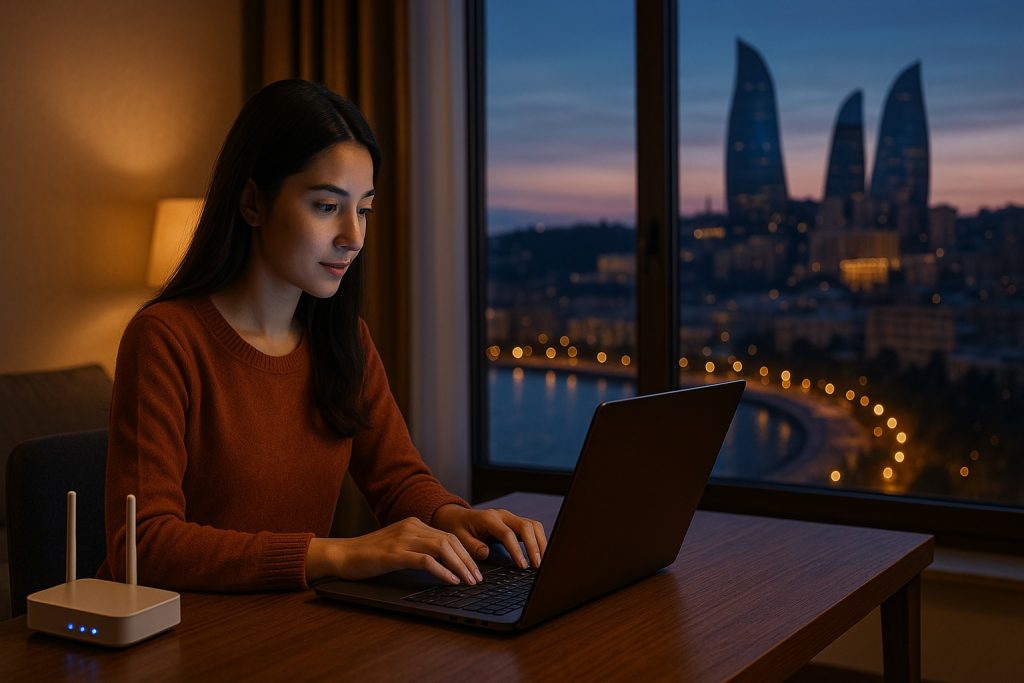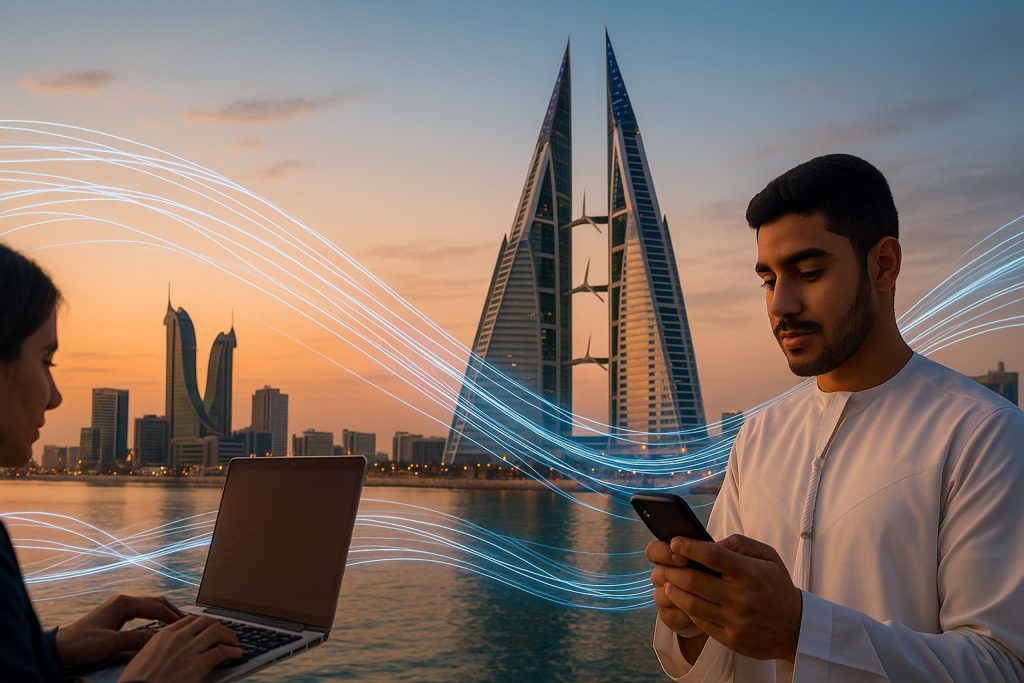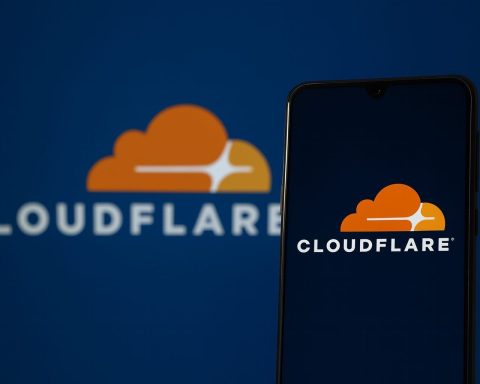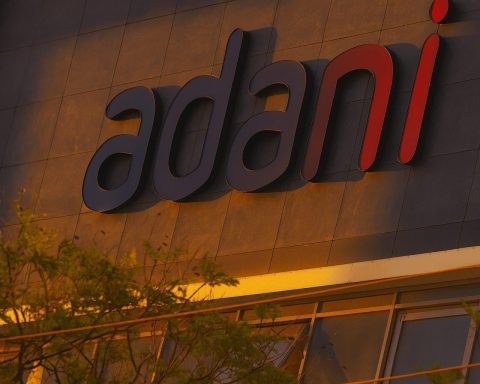- As of January 2024, 390,800 Bahamians were internet users, representing about 94.4% of the population.
- Fixed broadband adoption is only about 24% nationwide, with many Bahamians relying on mobile data for online access.
- The Bahamas spans roughly 700 islands with about 30 inhabited, creating significant challenges for universal fixed-network coverage.
- Bahamas Telecommunications Company (BTC) offers fiber-to-the-home (FTTH) with speeds up to 1 Gbps, including mid-tier plans around 150–350 Mbps priced from roughly $70–$85 per month.
- Cable Bahamas (REV) provides fiber/broadband via a hybrid network, with ALIV Fibr delivering fiber speeds up to 1 Gbps in select areas and standalone 100 Mbps–1 Gbps plans from about $54.50 to $150 per month.
- In February 2023, the regulator URCA licensed SpaceX Starlink, and by 2024 Starlink dishes were proliferating on outlying islands, reaching thousands of households.
- As of 2023, about 95% of the Bahamian population was served by 4G LTE, with around 20,000 people still on 3G.
- Hurricane Dorian in 2019 crippled power and cell towers, prompting rapid restoration and roaming agreements between BTC and Aliv to extend coverage.
- The Exuma Fiber Project, late 2023, connected 34 Exuma cays with subsea fiber, delivering always-on broadband and signaling plans for expansion to other Family Islands.
- SpaceX Starlink has become a key satellite option for remote islands, with around 9,000 active Bahamian users by April 2025 and a residential price around $55–$75 per month plus about $400 for equipment.
The Bahamas boasts one of the highest internet penetration rates in the Caribbean. As of January 2024, an estimated 390,800 Bahamians were internet users – roughly 94.4% of the population [1]. This marks a dramatic rise from just 43% in 2010 [2]. In other words, only about 5–6% of Bahamians remain offline [3]. The vast majority of households and businesses, especially in urban centers like Nassau (New Providence), have some form of internet access. Urban areas (where ~83.7% of the population lives) enjoy widespread connectivity, while the small minority in rural or remote islands are more likely to be among the offline population [4] [5].
Despite near-universal access to the internet in a general sense (through either fixed or mobile means), the Bahamas has been lagging in fixed broadband adoption. Only about 24% of people have a dedicated high-speed fixed internet subscription, counting DSL, cable, or fiber connections [6] [7]. This suggests many Bahamians rely on mobile data or shared connections rather than their own wired broadband at home. Still, virtually all Bahamians can get online one way or another – reflecting the country’s significant progress in digital access.
Major Internet Service Providers and Available Technologies
Internet services in the Bahamas are provided primarily by two companies, offering a mix of technologies from fiber-optics to wireless:
- Bahamas Telecommunications Company (BTC) – The incumbent telecom operator (formerly BaTelCo) provides both fixed and mobile services. On the fixed side, BTC historically offered ADSL broadband over copper phone lines, but in recent years it has been rolling out fiber-to-the-home (FTTH) in many areas. BTC now markets high-speed fiber internet plans up to 1000 Mbps (1 Gbps) download [8]. For instance, BTC’s fiber packages include tiers like ~150 Mbps, 350 Mbps, and up to gigabit speeds, with prices starting around $70–$85 per month for mid-tier plans [9]. In areas not yet reached by fiber, BTC continues to offer DSL broadband (which historically topped out around 10–16 Mbps on legacy plans). BTC’s fixed network reaches all major islands; however, connectivity in smaller settlements may still rely on older copper lines or wireless links.
- Cable Bahamas (REV) – Originally a cable TV provider, Cable Bahamas (branded as “REV”) is the other dominant ISP. It operates a hybrid fiber-coax (HFC) network for broadband and TV in New Providence (Nassau), Grand Bahama, and some other islands. Over coaxial cable infrastructure, REV has offered download speeds in the tens of Mbps (e.g. legacy plans of 30 Mbps, 75 Mbps, 105 Mbps) [10] [11]. In recent years Cable Bahamas has accelerated investment in fiber-to-the-home as well, spending roughly $80–$85 million on a new FTTH network to compete directly with BTC’s fiber offerings [12]. The company’s new “ALIV Fibr” service (integrated with its mobile brand) now provides fiber broadband in select areas, with speeds up to 1 Gbps. For example, REV’s standalone fiber plans range from 100 Mbps at ~$54.50 per month up to 1000 Mbps (1 Gbps) at $150 per month [13] [14] (with discounts when bundled with TV or phone services). This fiber rollout initially targets high-demand neighborhoods in Nassau and parts of Abaco, with plans to expand coverage gradually [15] [16]. On islands where REV has not deployed cable or fiber, it does not generally offer service – those areas have typically been BTC’s domain or are newly looking to satellites.
- Other Providers/Technologies – Aside from the two giants, the Bahamian ISP market has limited additional players. Fixed wireless broadband has been used in some cases to reach remote users (for instance, point-to-point wireless links or Wi-Fi from local entrepreneurs in small cays). However, no third nationwide ISP exists; BTC and Cable Bahamas account for the vast majority of fixed-line internet subscriptions. Satellite-based providers (discussed later) are emerging as a key option in remote locations. Overall, the access technologies in use include fiber-optic links in urban areas, cable broadband over coax, DSL over copper phone lines, fixed 4G/LTE routers, and increasingly satellite dishes – each employed as appropriate given the geography.
Mobile Internet Access and Cellular Networks
Mobile broadband is crucial in the Bahamas, as it enables internet access across all islands. There are two main mobile network operators:
- BTC (Bahamas Telecommunications Company) – BTC operates a national mobile network (GSM/UMTS/LTE) and was the sole cellular provider until 2016. Its mobile arm offers 2G/3G coverage and nationwide 4G LTE coverage for data. BTC’s mobile network historically had the widest reach, covering virtually all inhabited islands and cays through an array of cell towers and microwave backhaul links.
- Aliv (Be Aliv) – Aliv is the newer mobile operator, launched in 2016 as part of liberalization. It is partly owned by Cable Bahamas and introduced competition to the mobile sector. Aliv runs a 4G LTE network that now covers the majority of the population. Within a few years of launch, Aliv achieved coverage on all the major islands and many smaller ones. (By 2020, the company reported it had 3G/4G service on every inhabited island, with LTE-Advanced available on New Providence, Grand Bahama, Bimini, central Abaco, parts of Exuma and Eleuthera [17].) Aliv’s presence pushed BTC to improve its offerings, and the two carriers today have comparable coverage footprints.
Coverage and performance: Both carriers claim nationwide coverage in population centers. In fact, as of 2024, it is possible to get at least voice/text service on every inhabited island in the Bahamas [18]. Nearly every settled town or village has a cell tower, so coverage is strong near communities. Data connectivity is typically 4G LTE in developed areas – LTE speeds rival what is found in the U.S., with users often seeing fast downloads on populated islands [19]. However, in very remote spots (between settlements or far offshore), signals can drop to 3G or fade out entirely. For example, boaters note that if you anchor a few miles from an island with a tower, your connection may degrade from LTE to 3G, and beyond 10–15 miles it might cut out [20] [21]. Overall, around 95% of the population is covered by 4G LTE service, leaving only a few thousand people limited to older 3G or 2G signals [22].
Both BTC and Aliv offer mobile data plans (prepaid and postpaid) that allow smartphones or wireless modems to access the internet. The typical mobile data speeds in practice range from a few Mbps up to a few dozen Mbps, depending on network load and signal quality – generally sufficient for streaming and standard internet use. According to an August 2022 analysis, median mobile download speeds were lower than median fixed-broadband speeds, reflecting the inherent limits of LTE vs. fiber/cable networks [23]. Even so, mobile connectivity is the primary internet access method for many Bahamians, especially in places where wired broadband is unavailable or too costly.
Costs: Mobile internet pricing in the Bahamas is relatively high by global standards, but affordable relative to local income levels. The International Telecommunication Union (ITU) cited an average monthly cost of ~$32 USD for a mobile plan including 2 GB of data (plus some calls/texts) in 2023 [24]. This was about a 24% increase over the previous year’s cost, but amounts to around 1.2% of per capita income in the Bahamas [25] – a lower burden than the 5%+ of income that is common worldwide. Both operators frequently offer prepaid data bundles; for example, a 2 GB data package might cost on the order of $30 (exact pricing varies). Tourists or sailors visiting the islands often purchase a local SIM card to avoid roaming fees, since roaming on Bahamian networks can be expensive [26]. Overall, while mobile data in the Bahamas isn’t cheap in absolute terms, the coverage and speed generally provide good value to users who have few other options in the Family Islands.
Internet Speeds and Pricing Tiers
Internet service speeds in the Bahamas have improved markedly with the introduction of fiber and LTE, though they still lag the fastest global averages. Fixed broadband connections in the Bahamas had an average download speed of about 70 Mbps (and upload ~20 Mbps) as of early 2025 [27]. This average places the country around 89th globally for fixed download speed [28] – a respectable performance, but with room for growth. By comparison, the average mobile download speed is lower (data suggests it was below 40 Mbps on average, as mobile tends to be slower than fixed). The majority of consumers experience speeds dependent on their chosen plan and location: fiber and cable customers in Nassau can get 100+ Mbps easily, whereas a user on ADSL in a small settlement might only get a few Mbps.
To illustrate the offerings, the table below shows representative residential internet plans from major providers (prices in Bahamian dollars, which are on par with USD):
Representative Fixed Broadband Plans (2024)
| Plan Tier | Download Speed | BTC Fiber Monthly Price | REV Fiber Monthly Price (standalone) |
|---|---|---|---|
| Basic/Prime Fiber | 100 Mbps | ~$70 (fiber or VDSL) | $54.50 [29] |
| Mid-tier/Pro Fiber | ~250–350 Mbps | ~$85 (e.g. 350 Mbps plan) [30] | $74.50 [31] |
| High-tier/Premium Fiber | 500–750 Mbps | N/A (BTC jumps to 1000) | $90.50 (500 Mbps) [32] / $124.74 (750 Mbps) [33] [34] |
| Top-tier Gigabit | 1000 Mbps (1 Gbps) | ~$150 [35] | $150.00 [36] ($125.99 if bundled) |
Table Notes: BTC’s fiber plans start at around 150 Mbps and go up to 1 Gbps [37]. REV (Cable Bahamas) offers similar tiers; its standalone “Prestige” fiber plan (750 Mbps) is about $125, and a new 1 Gbps plan launched at $150 [38]. Bundling with other services can reduce those prices (e.g. 1 Gbps for ~$126 bundled) [39]. In areas limited to legacy DSL or cable (HFC) service, speeds and prices differ – for example, REV’s old coax plans offered 30 Mbps for ~$50 and 75 Mbps for ~$90 per month [40] [41]. All prices exclude VAT and are subject to change.
Overall, the cost of broadband in the Bahamas tends to be higher than in North America, reflecting the small market and high infrastructure costs. However, competition and technology upgrades are gradually improving the value proposition. Customers in Nassau now enjoy far higher speeds at similar prices compared to a few years ago, thanks to fiber upgrades. The outlying islands, on the other hand, often still pay relatively high fees for much slower service (if relying on older technologies). This urban–rural gap is something the industry and government are working to close.
Coverage Across the Archipelago: Regional Availability
Providing uniform internet service across an archipelago of 700 islands (about 30 of them inhabited) is a significant challenge. Connectivity and options vary by island and region, as summarized below:
Internet Availability by Island/Region
| Island / Region | Fixed Broadband Options | Connectivity Notes |
|---|---|---|
| New Providence (Nassau) | Fiber (FTTH) – BTC, REV; Cable (DOCSIS); DSL | Densely covered with high-speed networks. Gigabit service widely available in Nassau’s metro area [42]. Virtually all households can get broadband via BTC or REV. |
| Grand Bahama (Freeport) | Cable and Fiber (in Freeport); DSL in some areas | Second-largest urban area with modern infrastructure. Both BTC and REV serve Freeport with fast broadband. Fiber rollout is ongoing in some communities. |
| Major “Family Islands” (e.g. Abaco, Eleuthera, Exuma, Andros, Bimini) | Partial fiber/cable in towns; ADSL and fixed wireless; 4G LTE widely used | Many larger outer islands have some fixed broadband: e.g. Abaco and Eleuthera have fiber in select settlements [43], and Exuma has a new subsea fiber backbone (2023) reaching 30+ cays [44]. Outside main towns, residents often rely on cellular data or point-to-point radio links. |
| Small Islands & Remote Cays | Typically no wired service (few exceptions); cellular and satellite internet only | The smallest communities lack terrestrial broadband infrastructure. Until recently they managed with spotty 3G/4G signals or expensive VSAT. Now, Starlink satellite dishes are rapidly being adopted to obtain fast internet in these remote spots [45] [46]. |
Note: All inhabited islands have at least basic voice and data coverage via the mobile networks [47]. Every settlement with electricity typically has a cell tower nearby, so 4G mobile internet is essentially island-wide (albeit with varying quality). However, fixed-line broadband (fiber/cable/DSL) is concentrated in the more populous islands. Ambitious projects are underway to extend fiber-optic links to more remote islands and cays to improve service quality outside Nassau.
Challenges and Limitations in Connectivity
The Bahamas faces unique challenges in providing internet across a widely dispersed archipelago:
- Geography and Scale: The population of ~400,000 is spread over dozens of islands and cays, many of which are sparsely populated. Laying fiber-optic cables or other infrastructure to every inhabited dot of land is extremely costly. Some small islands have only a few hundred residents, making it hard to justify expensive network deployments. Thus, there has been an economic and logistical challenge in delivering equal service everywhere. Many Family Islands historically relied on a single slow DSL line or microwave link for the whole community, leading to congestion and unreliability.
- Infrastructure Gaps: While the main islands are interconnected by submarine fiber cables (such as the Bahamas Domestic Submarine Network International, and international cables like BICS and ARCOS linking to Florida), smaller islands often lack direct fiber connections. They might be connected via point-to-point wireless relays or satellite backhaul. These methods have higher latency and lower capacity than fiber, resulting in “last mile” bottlenecks. For example, prior to 2023, dozens of Exuma Cays had no broadband at all – a situation now being addressed by new subsea fiber installations [48]. Even on larger islands, service outside the main towns can be spotty.
- Service Quality and Reliability: Users have frequently reported issues with service outages and slowdowns outside of Nassau. In some Family Islands, residents experience frequent drops in connectivity or very slow speeds, which has bred frustration [49]. A 2023 survey found many Bahamian businesses complaining about the poor reliability and coverage in the Family Islands, saying providers fail to consistently meet needs [50] [51]. Bandwidth can be limited by outdated equipment or constrained backhaul links. Power outages also impact telecom infrastructure – the electric grid on many islands is less than stable, and backup systems are not always robust, leading to cell tower downtime when electricity fails.
- Hurricane Damage: The Bahamas is prone to powerful hurricanes which can devastate infrastructure. Recent storms illustrate this vulnerability: Hurricane Dorian (2019), a Category 5, “crippled the power grid and many cell towers in the Bahamas, especially Abaco” [52]. Both BTC and Aliv had to scramble to restore coverage after Dorian tore down towers and cut off entire islands [53]. In Dorian’s aftermath, some areas had no cellular service for weeks. Restoration requires rebuilding towers, re-stringing fiber, and flying in technical crews – a slow and costly process. Thus, maintaining communications through severe weather is an ongoing challenge. (It’s worth noting that BTC and Aliv enabled roaming on each other’s networks after Dorian to extend whatever coverage remained [54].) Hardening the network against storms – via backup satellites, more robust towers, and redundant links – is a key concern for the future.
- High Costs and Market Size: The small population and relative affluence of the Bahamas mean telecom services are not cheap. Importing equipment, running undersea cables, and maintaining remote sites all contribute to high operating costs, which are passed to consumers. While incomes in the Bahamas are higher than the regional average (making relative affordability better, as noted earlier), the absolute prices for internet and cellular service can be a barrier for lower-income residents. The duopoly of BTC and Cable Bahamas in many segments has also meant limited competitive pressure on prices historically (though this is starting to change).
Despite these challenges, progress is being made. 4G coverage is essentially universal, and as of 2023 the regulator reported 95% LTE penetration (with only ~20k people stuck on 3G) [55]. However, stakeholders agree that quality needs improvement. There have been calls for the operators to focus on improving reliability and speeds of existing 4G networks before leaping to new technologies like 5G [56] [57]. Both residents and businesses have expressed that they want consistent service – fewer drops and outages – across all islands “especially in the Family Islands” before 5G is prioritized [58] [59]. This feedback has guided the national strategy in recent years.
Role of Satellite Internet in Remote Areas
Given the geographic hurdles, satellite internet has emerged as a game-changer for the Bahamas’ remote communities. In particular, SpaceX’s Starlink low-Earth orbit (LEO) satellite service is transforming connectivity for many Family Island residents:
- Starlink’s Arrival: In February 2023, the Bahamian regulator URCA granted Starlink a license to operate in the country [60]. By 2024, Starlink dishes began proliferating on outlying islands. Starlink offers high-speed (50–150 Mbps or more) internet via satellite, requiring only a small pizza-sized dish and clear view of the sky. This has been a revelation for users in areas where, for example, DSL might have been 2 Mbps on a good day. An installer on Eleuthera noted: demand for Starlink is “huge” on the Out Islands like Eleuthera and Acklins, where previously “the internet is horrible” and people have been eager for a better option [61]. His company was installing at least one Starlink system per day due to the surging interest [62].
- Impact on Locals: Starlink’s performance and reliability have generally impressed users who had no alternative to slow or spotty service. “The service is affordable, fast and consistent, and that means a lot to people… who had no choice but to accept bad service. Now they have another option,” said one Family Island tech business owner [63]. As of April 2025, Starlink had already grown to 9,000 active users in The Bahamas [64]. For context, that is a substantial portion of households in the remote islands. Starlink has essentially leapfrogged terrestrial infrastructure in those areas, bringing broadband to places that cable/fiber companies never reached.
- Cost and Setup: Starlink’s residential service in the Bahamas is priced around $55–$75 per month (some plans are discounted in the region) plus a one-time equipment cost (~$400 for the dish kit) [65]. While the upfront cost is significant, the monthly fee is comparable to or less than what many rural users were paying for subpar legacy services. Given the improvements in speed (dozens of Mbps vs. perhaps 1–2 Mbps before) and the ability to finally do things like stream video or make stable video calls, many find it worth the price. Moreover, Starlink requires no local telecom infrastructure – an attractive feature in storm-prone islands. After a hurricane, a Starlink dish can be running on a generator anywhere, whereas downed poles or microwave relays take much longer to fix.
- Competitive Concerns: The rise of satellite internet has not gone unnoticed by the incumbents. Both Cable Bahamas and BTC have voiced concern that Starlink enjoys an advantage and could siphon off customers – even suggesting it might become “the country’s next mobile provider” in the future [66]. Cable Bahamas argued that satellite providers should face comparable regulatory fees and obligations as terrestrial telcos [67]. Regulators, however, have maintained that Starlink’s license is limited to fixed broadband (not mobile telephony) and that policy still reserves the mobile sector for the two licensed operators [68]. In other words, Starlink is not allowed to offer cellphone service, only internet at fixed locations, keeping it as a complementary service for now [69].
- Other Satellite Options: While Starlink is currently the main player, it has opened the door for others. The Bahamas is looking forward to additional LEO constellations like Amazon’s Project Kuiper and even other satellite tech (OneWeb, or regional providers) which could drive competition in the coming years [70]. Historically, satellite internet in the Bahamas was limited to expensive VSAT used by yachts, remote resorts, or as backup for banks. These legacy satellite connections were high-latency and costly (hundreds or thousands of dollars per month), so they never saw mass adoption for home use. Starlink’s model – low latency and moderate cost – is therefore a paradigm shift. It particularly addresses the “last 5%” connectivity gap in the population.
- Disaster Resilience: Satellite services are also being embraced for emergency communications. SpaceX has donated 56 Starlink units to the Bahamas’ Disaster Risk Management Authority for deployment in hurricane response efforts [71]. These units can be quickly activated to provide internet and phone (VoIP) service to first responders and affected communities when terrestrial networks go down. Officials noted that Starlink has been “critical to allowing folks to have communications when the worst happens” and can literally help save lives in a post-hurricane scenario [72]. This redundancy is extremely valuable given the Bahamas’ exposure to hurricanes.
In summary, satellite internet – led by Starlink – now plays a crucial role in the Bahamas. It is expanding internet access to the hardest-to-reach corners of the nation and forcing the traditional ISPs to up their game. While it won’t completely replace ground networks (especially in high-density areas), it provides a lifeline and an alternative that did not exist a few years ago.
Recent Developments and Connectivity Initiatives
The Bahamian government and private sector have undertaken several initiatives in recent years to improve digital connectivity:
- National Fiber Expansion: Both major ISPs have accelerated their fiber build-outs. Cable Bahamas’ ongoing $80+ million FTTH upgrade (branded ALIV Fibr) is a direct response to competition and new market threats like Starlink [73]. The company officially launched its fiber-to-the-home network in May 2023, and by mid-2023 it was “gathering steam” with new areas coming online. BTC, for its part, has also been extending its Fiber network (BTC Fiber) to more neighborhoods; the two companies are effectively racing to wire up customers with gigabit-capable service. This fiber expansion is aimed at delivering more reliable, higher quality internet – and retaining customers who might otherwise look to wireless alternatives. As of 2025, fiber access is becoming common in New Providence and is present in parts of Grand Bahama, Abaco, Eleuthera, etc., with further rollout plans underway [74] [75].
- Subsea Backbone to Family Islands: A significant public-private effort has been the extension of submarine fiber cables to mid-sized islands. In late 2023, Cable Bahamas partnered with Global Nexus (GNX) to lay a “world-class subsea fiber network” through the Exuma island chain, bringing broadband connectivity to 34 Exuma cays that previously had limited internet [76]. This “Exuma Fiber Project,” supported by the government and the Deputy PM (an MP for Exuma), was expected to deliver “always on” high-speed internet to those cays by Christmas 2023 [77] [78]. It is essentially a pilot project demonstrating that fiber can reach remote communities, boosting tourism and economic opportunities in the outer islands. The partners have hinted at similar projects planned for at least two other Family Island regions after Exuma [79] [80]. These initiatives align with the government’s broader goals of nation-building through technology and inclusive development.
- Policy and Regulation: The Bahamian telecom regulator, URCA, has been actively shaping the connectivity landscape. In addition to licensing Starlink, URCA in 2022–2023 conducted consultations on 5G mobile networks. The consensus that emerged was to go slow on 5G until service quality issues are resolved and demand justifies it [81] [82]. Both BTC and Aliv indicated a 5G rollout might not be “economically viable” yet given the high investment and the fact that many customers are still fine with 4G speeds [83]. URCA is thus focusing on improving 4G coverage, internet availability, and service quality across all islands before pushing new technology [84] [85]. Additionally, URCA has moved to update wholesale regulations – for instance, addressing BTC and Aliv’s infrastructure sharing – to foster competition and network resilience. The government has signaled that increased competition (even potentially more telecom operators regionally) could benefit consumers with better services and prices [86]. However, as of 2025, the policy remains to have just two mobile operators, and efforts concentrate on making those two compete vigorously and expand their reach.
- Universal Service and Community Access: The government has also discussed universal service obligations and projects to ensure all Bahamians can get online. There have been programs to set up free Wi-Fi hotspots in community centers, schools, and libraries on various islands. For example, some school-based initiatives aim to provide internet access and tablets to students in remote districts. The pandemic (COVID-19) highlighted the need for robust internet for remote learning, which spurred some emergency upgrades and the deployment of mobile cell sites to underserved areas. While not all of these are permanent, they set the stage for longer-term infrastructure in those communities.
- Public-private Collaboration: A noteworthy trend is collaboration between the government and private telecom firms to achieve national connectivity goals. The Exuma fiber project mentioned is one such collaboration. Another is disaster preparedness: the government partnering with providers to stockpile satellite units and portable cell towers for quick deployment after hurricanes. There is also ongoing dialogue about reducing the digital divide – for instance, encouraging providers to offer affordable broadband packages for low-income households or expanding coverage to every inhabited rock and cay (perhaps with subsidies or grants). The Bahamas’ National Development Plan and digital agenda include commitments to modernize ICT infrastructure as a pillar of economic development.
In conclusion, the Bahamas has made remarkable strides in internet access, achieving very high usage rates and modernizing its networks. Fiber and 4G/LTE now deliver fast connectivity to the bulk of the population, and new solutions like Starlink are reaching the rest. Challenges persist in terms of infrastructure costs, hurricane threats, and ensuring quality of service across all islands. Yet, with ongoing investments and innovations, the digital divide within the archipelago is gradually narrowing. The combined efforts of BTC, Cable Bahamas/Aliv, and new entrants are driving the Bahamas toward a more connected future – one where even the smallest island can be online with reliable, high-speed internet [87] [88].
Sources:
- DataReportal, “Digital 2024: The Bahamas” – key internet user statistics [89] [90].
- Worlddata.info, Telecommunication in the Bahamas – average speeds, broadband adoption, and mobile cost data [91] [92].
- The Tribune 242 (Neil Hartnell, May 2023), “Improve service quality before rolling out 5G” – URCA 5G consultation and feedback [93] [94].
- The Tribune 242 (April 2025), “Starlink’s Out Island surge may put Cable, BTC ‘out of business’” – Starlink user uptake and impact on remote islands [95] [96].
- The Tribune 242 (May 2023), “Cable ‘accelerates’ fibre due to Elon Musk threat” – Cable Bahamas’ FTTH investment and Starlink licensing [97] [98].
- BahamasLocal News (Sept 2023), “Internet connectivity across Exuma cays to be powered by sub-sea fibre” – subsea fiber project connecting 34 Exuma cays [99] [100].
- Waterway Guide (Nov 2024), “Cellular Coverage & Staying Connected While Boating in The Bahamas” – notes on island-by-island cellular coverage improvements [101] [102].
- BTC Bahamas and REV (provider websites) – advertised broadband plans and pricing [103] [104].
- Wireless Estimator (Sept 2019), “BTC, Aliv battling to bring back cell phone coverage in the Bahamas” – hurricane Dorian damage and network recovery [105] [106].
References
1. datareportal.com, 2. www.statista.com, 3. datareportal.com, 4. datareportal.com, 5. datareportal.com, 6. www.worlddata.info, 7. www.worlddata.info, 8. www.btcbahamas.com, 9. www.btcbahamas.com, 10. www.rev.bs, 11. www.rev.bs, 12. www.tribune242.com, 13. www.rev.bs, 14. www.rev.bs, 15. www.rev.bs, 16. www.rev.bs, 17. www.bealiv.com, 18. www.waterwayguide.com, 19. www.waterwayguide.com, 20. www.waterwayguide.com, 21. www.waterwayguide.com, 22. www.worlddata.info, 23. www.statista.com, 24. www.worlddata.info, 25. www.worlddata.info, 26. www.waterwayguide.com, 27. www.worlddata.info, 28. www.worlddata.info, 29. www.rev.bs, 30. www.btcbahamas.com, 31. www.rev.bs, 32. www.rev.bs, 33. www.rev.bs, 34. www.rev.bs, 35. www.btcbahamas.com, 36. www.rev.bs, 37. www.btcbahamas.com, 38. www.rev.bs, 39. www.rev.bs, 40. www.rev.bs, 41. www.rev.bs, 42. www.tribune242.com, 43. www.rev.bs, 44. www.bahamaslocal.com, 45. www.tribune242.com, 46. www.tribune242.com, 47. www.waterwayguide.com, 48. www.bahamaslocal.com, 49. www.tribune242.com, 50. www.tribune242.com, 51. www.tribune242.com, 52. wirelessestimator.com, 53. wirelessestimator.com, 54. wirelessestimator.com, 55. www.worlddata.info, 56. www.tribune242.com, 57. www.tribune242.com, 58. www.tribune242.com, 59. www.tribune242.com, 60. www.tribune242.com, 61. www.tribune242.com, 62. www.tribune242.com, 63. www.tribune242.com, 64. www.tribune242.com, 65. www.facebook.com, 66. www.tribune242.com, 67. www.tribune242.com, 68. www.tribune242.com, 69. www.tribune242.com, 70. www.tribune242.com, 71. www.tribune242.com, 72. www.tribune242.com, 73. www.tribune242.com, 74. www.rev.bs, 75. www.linkedin.com, 76. www.bahamaslocal.com, 77. www.bahamaslocal.com, 78. www.bahamaslocal.com, 79. www.bahamaslocal.com, 80. www.bahamaslocal.com, 81. www.tribune242.com, 82. www.tribune242.com, 83. www.tribune242.com, 84. www.tribune242.com, 85. www.tribune242.com, 86. www.tribune242.com, 87. www.tribune242.com, 88. www.tribune242.com, 89. datareportal.com, 90. datareportal.com, 91. www.worlddata.info, 92. www.worlddata.info, 93. www.tribune242.com, 94. www.tribune242.com, 95. www.tribune242.com, 96. www.tribune242.com, 97. www.tribune242.com, 98. www.tribune242.com, 99. www.bahamaslocal.com, 100. www.bahamaslocal.com, 101. www.waterwayguide.com, 102. www.waterwayguide.com, 103. www.btcbahamas.com, 104. www.rev.bs, 105. wirelessestimator.com, 106. wirelessestimator.com
